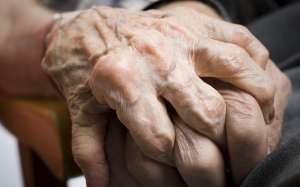

MedFriendly®


Gerontophobia
Gerontophobia is an anxiety disorder characterized by
an abnormal, irrational, and intense fear of the elderly,
becoming old, or both. While most people do not like
becoming old due to more personal physical limitations,
illnesses, and observing the death of friends and loved
ones, this dislike becomes pathological when it
significantly limits the personís daily functioning and/or
causes harm.
FEATURED BOOK: The Anxiety and Phobia Workbook
WHAT CAUSES GERONTOPHOBIA?
The cause of gerontophobia is usually tied in some way to a fear of death, which can be
symbolized by being elderly. Becoming older also brings one closer to fears associated
with oneís own mortality. Another cause of gerontophobia can be a traumatic experience
with the elderly.
WHAT ARE SIGNS AND SYMPTOMS OF GERONTOPHOBIA?
heart palpitations, shortness of breath, nausea, dizziness, lightheadedness, crying, chest
discomfort, fear of loss of control, feeling sick, and other signs of symptoms of anxiety
when exposed to the elderly or signs of personal aging. Gerontophobia can cause people
to withdraw from situations in which they know the elderly will be present. It can
sometimes result in depression.
"Where Medical Information is Easy to Understand"™
HOW IS GERONTOPHOBIA TREATED?
A psychological technique that is very helpful in treating
gerontophobia is cognitive behavioral therapy (CBT) in which people
learn to change their thoughts to change their resulting feelings. The
person learns, for example to focus more on the positive aspects of
becoming older than the negative aspects. In this way, thoughts
become less intrusive and anxiety-provoking. CBT is the most
common form of treatment. Another technique is a method known as
desensitization in which a person is taught how to relax (e.g., deep
breathing) when being near the elderly or when seeing signs of
personal aging (e.g. a picture of an elderly person, walking near an
elderly person, talking to an elderly person).
The person is exposed to more intense forms of the stimulus as they master the fear at the less intense
level. Sometimes, the more intense form of the stimuli is based on amount of the stimuli whereas in other
cases it may be based on the duration of exposure (e.g., one minute, two minutes, three minutes, etc,
such as the length of time one can calmly converse with an elderly person). CBT is often combined with
desensitization and typically works within a few months.
Another treatment technique is a behavioral method known as flooding in which the person is immersed
directly in the feared stimulus (e.g., a visit to a nursing home) to demonstrate that the fear is irrational.
The fear is replaced by realization of this and the application of relaxation techniques. Flooding is a faster
but more traumatic form of treatment than desensitization. A more insight-oriented technique involves
exploring the original cause of the phobia (e.g., fear of death) and trying to resolve issues surrounding
this. This may involve use of CBT techniques and/pr other counseling methods. Group therapy with other
people sharing the same phobia or other phobias may also be helpful. Gerontophobia can be treated by an
anti-anxiety medication designed to decrease anxiety. Sometimes, antidepressant medications may be
used because some anti-depressants are useful for treating anxiety as well as depression.
WHAT ELSE IS GERONTOPHOBIA KNOWN AS?
Gerontophobia is also known as gerascophobia.
WHAT IS THE ORIGIN OF THE TERM, GERONTOPHOBIA?
Gerontophobia comes from the Latin word "geron" meaning "old man," and the Greek word "phobos"
meaning "fear." Put the two words together and you have "fear (of) old man."















